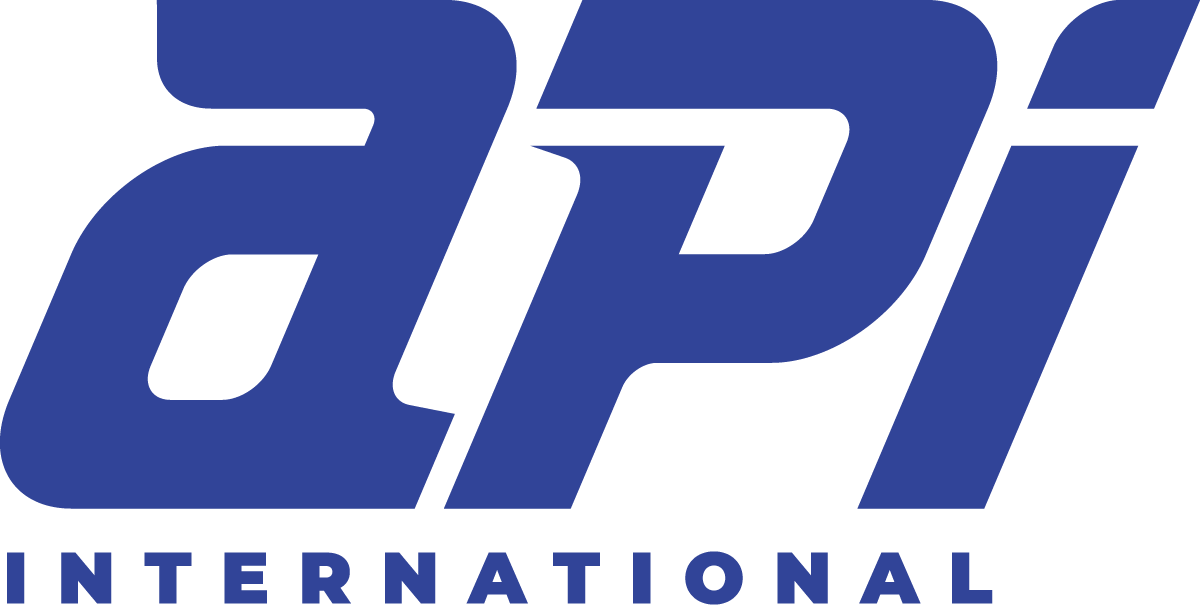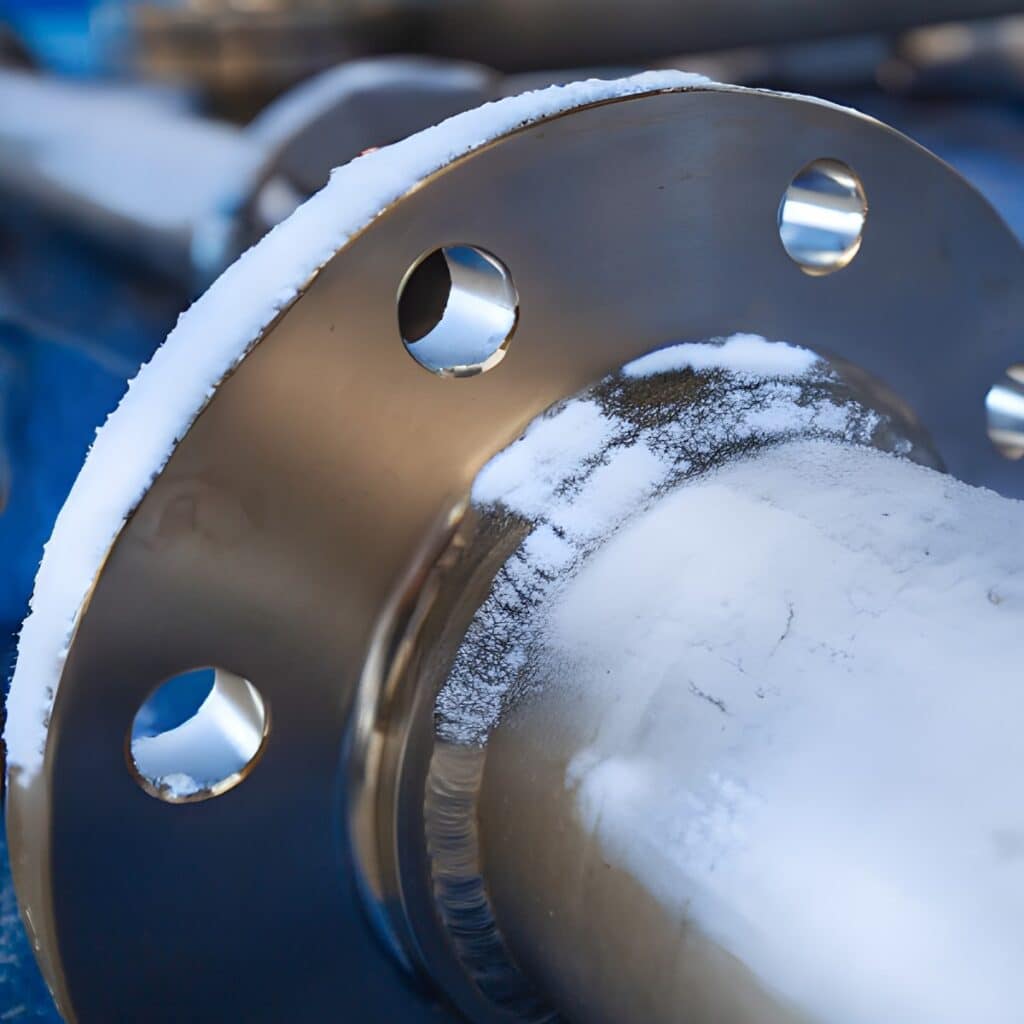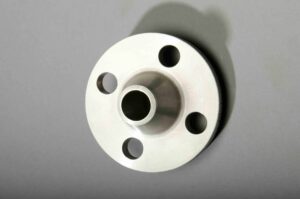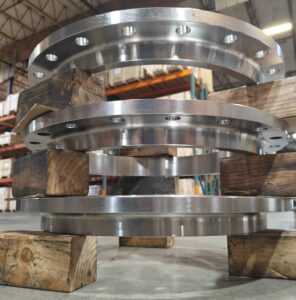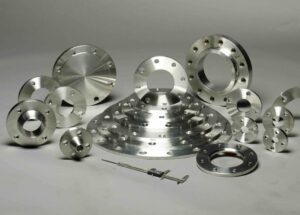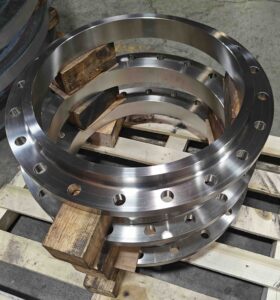Key Concepts
1. Pressure class & temperature:
2. Facing & gaskets:
3. Bolt patterns:
4. Large diameters:
Over NPS 24, steel flanges follow ANSI/ASME B16.47 (Series A/B).
Compatibility Table: Pipe Material vs. Flange Standards
Pipe Material | Typical Flange / Fitting Standard(s) | Common Pressure / Size Range | Key Compatibility Notes |
Carbon steel pipe | ASME B16.5 (½–24 in); ASME B16.47 (>24 in). Common flange grades: ASTM A36, Q235, ASTM A105 | Classes 150–2500 depending on P–T; NPS ½–60. | Selected flange class must match design pressure–temperature. Raised Face (RF) and Ring-Type Joint (RTJ) facings are standard. Material grade ensures ductility and toughness for low-temp service. |
Stainless steel pipe | ASME B16.5 / B16.47. Materials: 304, 304L, 316, 316L, High Carbon Variants (304H, 316H), Dual Grades (304/304L, 316/316L) | Classes 150–2500; NPS ½–60. | Resistant to corrosion; RTJ faces often used for high-pressure. It is important to ensure gasket materials compatible with media. |
Ductile-iron / Gray-iron pipe & fittings (waterworks) | AWWA C110-21 (ductile-iron and gray-iron fittings with flanged or mechanical joints, 3–48 in); AWWA C115 (flanged DI pipe); AWWA C207 (steel flanges for waterworks). | C110 fittings: 3–48 in; flanged DI pipe up to 64 in; typical 250 psi working pressure (350 psi for ≤24 in flanged DI). | C110 fittings cover flanged & mechanical joints; drilling patterns often match ASME B16.1 Class 125. Flat-face flanges are standard; use full-face gaskets. It is essential to confirm alignment with valves/pumps (steel or cast iron). |
Gray cast iron pipe / valves | ASME B16.1 (Classes 25, 125, 250). | NPS per B16.1; pressure ratings per class. | Flat-face flanges must be paired with full-face gaskets. And raised-face steel flanges should not be connected directly to cast-iron flat faces due to the risk of cracking. |
Copper / copper-alloy systems | ASME B16.24 (cast copper-alloy flanges/fittings/valves, Classes 150–2500). | NPS sizes per B16.24; Classes 150–2500. | Typically used in seawater, cooling, or HVAC service. when joined to carbon steel in wet environments, the potential for galvanic corrosion should be considered. |
Stainless steel (waterworks service) | AWWA C228 (stainless steel flange joints for water, 2–72 in). | Sizes 2–72 in; pressure ranges per C228. | These flanges are designed for potable water and wastewater applications. Bolt drilling may differ and should be verified when connecting to ASME flanges. |
PVC / CPVC pressure pipe | Manufacturer flanges machined to ASME B16.5 Class 150 bolt pattern. Standards: ASTM D4024, D1784 (material), F437/F439 (fittings). | Typically rated ~150 psi at 73°F (lower at higher temperatures). | The bolt pattern is compatible with Class 150 steel flanges, but the joint pressure rating is limited by the plastic material. Flat-face flanges with full-face gaskets are typically used, while RTJ facings are not suitable. |
HDPE pressure pipe | AWWA C906 pipe; connections via stub-end + steel backing ring drilled to ASME B16.5 Class 150; or proprietary flange adapters. | Pressure rating depends on pipe DR (e.g., DR9 ≈ 250 psi at 73°F). | HDPE pipe connects to metal flanges through flange adapters or backing rings, typically drilled to the ASME Class 150 bolt pattern. Compatibility should be verified against AWWA C906 specifications. |
